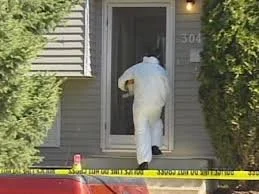Waco Siege: 29 Years On
This week marks the 29th anniversary of the siege at the Branch Davidians compound in Waco, Texas. What would occur over a 51-day standoff would end with the deaths of 80 people, which included 24 children.
The beginning of the Branch Davidians comes in the 1930s when a disgruntled member of the Seventh Day Adventist Church, Victor Houteff broke off and formed his own church within the Davidian movement. After Houteff’s death, a man named Ben Rhodes led an offshoot of the movement called the Branch Davidians at Mount Carmel in 1962.
The Branch Davidians believed the Bible was the literal word of God. They looked for clues and signs foretelling the second coming of Christ as told in the Book of Revelation. After Roden died, his widow Lois became the head prophetess of the sect. In 1981, Vernon Wayne Howell arrived at Mount Carmel. Howell became involved with Lois, to the anger of her son, George.
George would be shot in late 1987, although he would survive. Howell and seven others went to trial for attempted murder but were all acquitted with the exception of Howell. His trial ended in a mistrial. In 1990, Howell had firm control over the sect, changing his name to David Koresh.
Koresh believed himself to be the messiah, and any children born to him would, in turn, become children of the messiah. He engaged in multiple “spiritual marriages” with girls who were under the age of 18 and feathered at least 13 children. The FBI initially wasn’t looking towards the Branch Davidians on claims of sexual abuse.
The FBI and the ATF, the Bureau of Alcohol, Tobacco, and Firearms, were initially interested in the Branch Davidians because the government believed they had amassed a large number of firearms. When both agencies initially wanted to raid the compound, the group was tipped off by a news crew, who asked where the compound was. The raid would not be called off.
The question of who shot at who first is one that is still under much contention. Within two hours, four ATF agents were dead and six Branch Davidians were killed. The only reason the gunbattle, the longest in US history, ended, was because the federal agents were running out of ammunition.
What would follow would be an unprecedented standoff. The FBI took over control after the first day, wanting to avoid bloodshed. They used a variety of tactics, including playing incredibly loud music and shining spotlights into the building in order to cause sleep deprivation. This operation included 900 law enforcement officials, including hostage negotiators.
Reporters also flocked to the scene. The siege played out every night on national television, with many outlets quickly branding the Branch Davidians a cult.
Initially, Koresh had contact with local media via telephone, but the FBI cut all communication. After he was unable to communicate with the outside, the only people he spoke to outside his own followers were the team of 25 hostage negotiators. The FBI also gave Koresh a video camera, where he would introduce his many wives and children.
Negotiators believed they struck a deal when they agreed to allow Koresh to record a message which would be played on national media. They were supposed to leave the compound after this, but Koresh said that God told him to stay inside. The Branch Davidians did release 19 children afterward. Despite these releases, 98 people remained inside the building.
The children released, ranging in ages 5 to 12, were interviewed by Texan officials who described the physical and sexual abuse they experienced throughout their lives at the compound. This was the justification that gave President Bill Clinton and Attorney General Janet Reno to use tear gas to drive out the members of the sect.
On April 19, 1993, Attorney General Reno decided to approve recommendations for an assault against the Branch Davidians. After making her case to President Clinton, the assault was approved. Due to the unknown amount of ammunition held by the Davidians, the FBI and other agencies decided to use Combat Engineering Vehicles to make holes in the sides of the building. This was so they had access points to spread tear gas.
After the tear gas was spread, a fire began. The source of the fire remains disputed to this day. Government officials say the fires were deliberately set by the Branch Davidians. The fires, tear gas, being buried alive by rubble, and gunshot wounds would eventually lead to 76 deaths. After the autopsies were performed, it became apparent that Steve Schnider, Koresh’s top aide, shot him before turning the gun on himself.
The public’s reaction to the end of the siege was one of the mixed reactions. Many believed they were a religious cult, dangerous, and “getting what they deserved” as President Clinton claimed in a speech the day after. Others believe the Branch Davidians were simply exercising their second amendment rights and worshipping God.
For far-right anti-government groups, it became a rallying cry for actions against the government. On April 15, 1995, Timothy McVeigh parked a Ryder truck outside the Murray building in Oklahoma City, Oklahoma. At 9:02 a.m., an explosion ripped through the building, killing 168 victims, including 19 children. Over 650 people were injured. McVeigh spent time outside the Mount Carmel compound during the siege.
Of the nine Branch Davidians who escaped, some formed a new church, calling it the “Branch, The Lord Our Righteousness,” in a new compound within the Waco space. Some of the survivors still meet for Bible study and in 2013, hope Koresh might return to lead them again. Survivor Sheila Martin describes how David gave them hope and that their only regret is that “We didn’t serve God better.”






